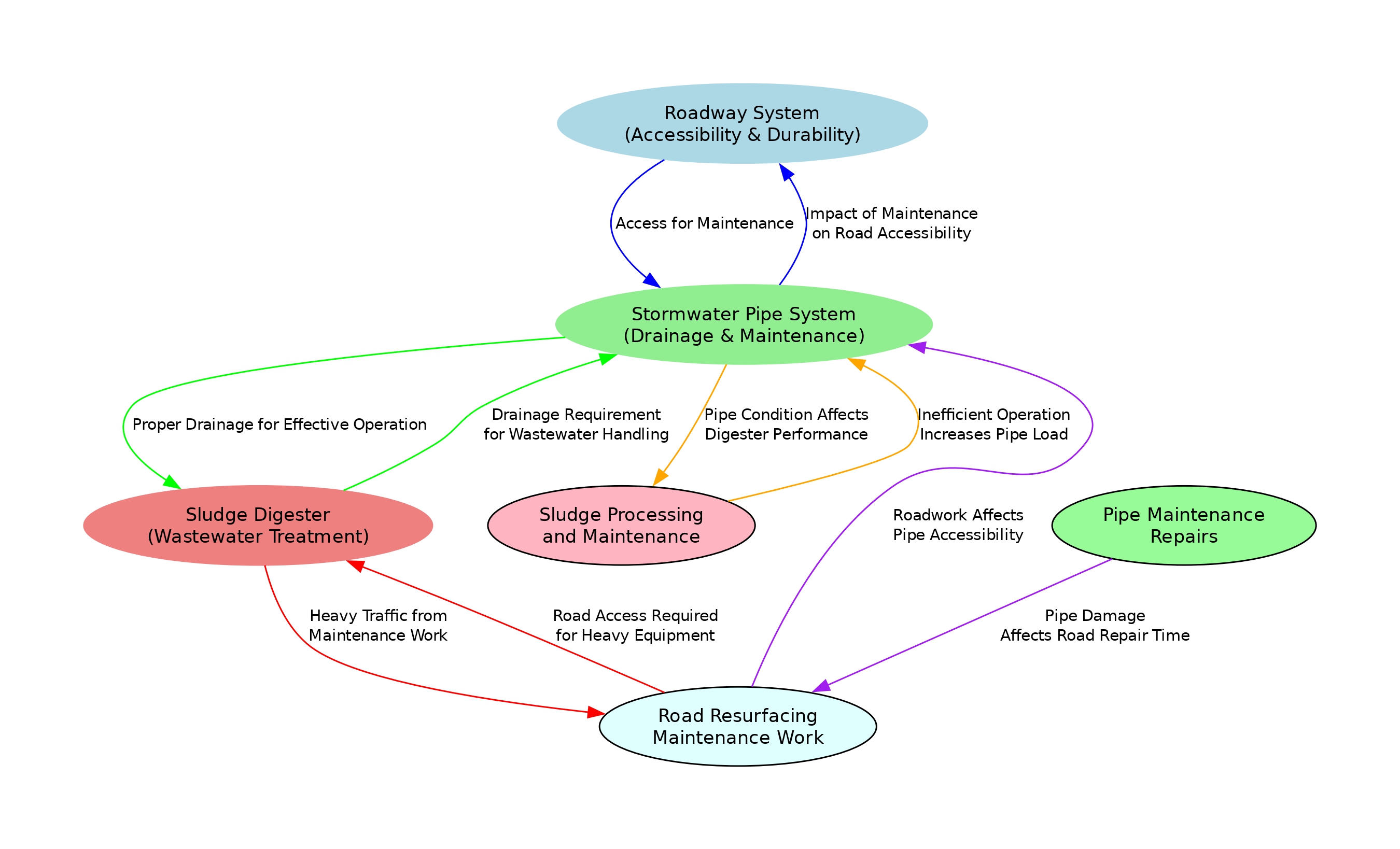Urban infrastructure systems are highly complex and interconnected, with each system affecting the functionality and maintenance needs of the other systems throughout their life cycles.
This project aims to integrate three critical civil engineering systems:
1. Highway pavement,
within the framework of a combined urban sewage system. The goal is to examine their interdependencies, evaluate the impact of maintenance techniques across systems, and create an optimised maintenance plan that reduces costs and disruptions while assuring efficient operation and sustainability.

System Interactions and Interfaces
1. Roadway System & Stormwater Drainage System
Physical Dependency: Stormwater drainage pipes run beneath roads, therefore any repairs or breakdowns in the drainage system may demand road closures, increasing downtime. However, if stormwater drainage maintenance is coordinated with roadwork, the efficiency of the maintenance work can be improved by reducing total downtime.
Additionally, sometimes roadwork can accidentally damage stormwater pipes, which are often within 1.5-2m of the road’s surface. If this issue is not noticed until after the road has been fully returned to operation, the downtime may be doubled. Furthermore, the unplanned maintenance of the damaged stormwater pipe diverts resources from other ongoing projects, leading to increased downtime or higher costs elsewhere.
Operational Impact: A poorly-operating drainage system can cause water accumulation and flooding, resulting in erosion which can cause weakening of the pavement structure, and reduced durability of the roadway system. It is also a major safety hazard on high-speed roadways, and can induce the hydroplaning of a vehicle.
Maintenance Considerations: Scheduling road maintenance with pipe maintenance can minimise maintenance interruptions and improve intervention time.
2. Stormwater Drainage System & Wastewater Treatment (Sludge Digester)
Hydraulic Load Dependency: The stormwater drainage system collects surface runoff into underground combined sewer systems, which are connected to wastewater treatment facilities. Excess water flow during heavy rainfall might overload the system, lowering the effectiveness of the sludge digesters.
System Efficiency: Inefficient or clogged stormwater pipes cannot effectively transport runoff to the wastewater treatment facilities and may divert wastewater to the combined sewer outfall sooner, posing a water quality hazard.
Maintenance Coordination: Stormwater pipes must be inspected and cleaned on a regular basis to avoid system overload and maintain efficient wastewater treatment.
3. Roadway System & Wastewater Treatment (Sludge Digester)
Accessibility and Structural Support: The roadway provides access to wastewater treatment plants, and the road’s condition has a direct impact on the transportation of service vehicles and equipment.
Heavy Load Consideration: The sludge digester system requires regular maintenance, which involves large trucks and equipment that puts a strain on the roads. Access to treatment plants may be hampered if roads are not properly maintained.
Infrastructure Resilience: Ensuring the structural durability of the roadway system near treatment plants decreases the likelihood of maintenance delays and promotes continuous wastewater treatment operations.
→ Next Page: Maintenance Strategies
← Previous Page: Main Page